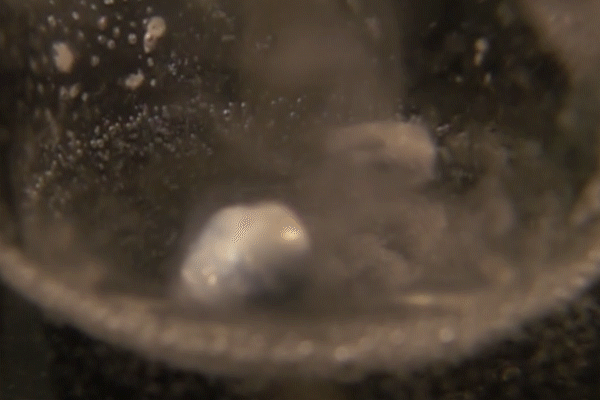Tamed sodium in water comes out of the blue

Controlled conditions prevent alkali metal in water exploding letting researchers film and examine reaction with new eyes

Controlled conditions prevent alkali metal in water exploding letting researchers film and examine reaction with new eyes